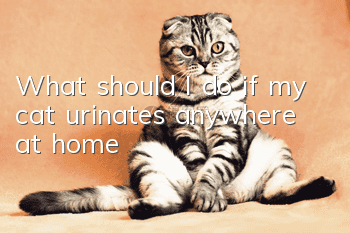Be wary of upper respiratory tract infections in cats, early prevention is key!

Be wary of upper respiratory tract infections in cats if they have a runny nose and sneezing
Be wary of upper respiratory tract infections in cats, early prevention is the key! Cats’ upper respiratory tract infections are a relatively difficult disease and are highly contagious, especially for young children. Cats are very dangerous. If your cat not only sneezes desperately, but also drools. In severe cases, the entire eyes and nose are covered with pus-like secretions, and the cat opens its mouth to breathe in pain. These symptoms represent your love. The cat may have a feline upper respiratory tract infection.
1. Pathogens
Any of the following pathogens may be the main cause of URI in cats: feline herpes virus type I (FHV-1), feline Calicivirus (FCV), Chlamydia felis (C. felis), Mycoplasma, Bordetella bronchiseptica. Typically, about 80-90% of URI cases are caused by one of the two viruses mentioned above. For rescue shelter cats, the occurrence of URI seems to be more related to the herpes virus. When FCV was identified as the cause of periodic outbreaks of URI in cats, it was not always necessarily related to the increased risk of URI in rescued cats, nor was it as easily spread as FHV. Primary respiratory pathogens increase the risk of secondary bacterial infections in cats, both by irritating the respiratory mucosa and, in some cases, directly damaging the immune function of the respiratory system. A variety of bacteria can be isolated from the respiratory tract of cats with URI, such as Pasteurella, Escherichia coli, Streptococcus, Enterobacter and Staphylococcus. Because the probability of isolation of Gram-negative bacteria is high, the antibacterial spectrum of antibiotics used to treat bacterial infections secondary to URI should include Gram-negative bacteria. It should be noted that not all cats with bacterial URI require antibiotic treatment. If cat URI occurs frequently in a certain area (mainly based on symptoms such as eye discoloration, nasal discharge, antibiotic treatment effect, etc.), you should consider whether the high bacterial load in the surrounding environment is due to dirty air or other sanitary conditions in the URI treatment area.
2. The spread of URI:
It is highly contagious. Most people may think that the most likely mode of transmission is airborne transmission, but in fact it is not. It is more commonly transmitted through contaminated media or droplets (which can be as far as 1.5 meters).
There are three main ways of infection:
1. Direct infection from acutely infected cats to susceptible cats: This method depends on whether the number of susceptible cats is sufficient , and whether there are sufficient contact opportunities between them.
2. Infection through the persistence of the pathogen in the environment: Although the pathogen survives in the environment for a limited time, it is indeed enough to cause indirect infection in other cats, especially in densely raised cat groups. Infection can occur through cages, food bowls, cleaning utensils, or people contaminated by secretions.
3. Cats that have recovered from the disease continue to excrete pathogens and become infected, which is the so-called carrier.
Cats in the same family are very similarIt is easy to be infected through the same toys, rice bowls, and even the same slaves. Cats with short noses and flat faces are more likely to be infected. The infection is permanent, and cats that have been affected may develop symptoms again at a later date due to stress.
3. Symptoms:
Sneeze all day long, bunches of yellow-green mucus, and the nose is stuffy. There is a lot of secretion in the eyes, the eyes are red, swollen and inflamed, and there are even corneal ulcers and mouth ulcers. The cry becomes strange, like the sound of a person having a cold.
Fever, poor appetite and poor spirits. It may cause chronic gingivitis, conjunctivitis, rhinitis, etc.
If the cat has symptoms such as loss of appetite, difficulty breathing, high fever, etc., it may require hospitalization. Young cats with low immunity may have severe symptoms and may develop into pneumonia, which may even be life-threatening. Therefore, if you notice symptoms, you must seek medical advice as soon as possible.
4. Diagnosis
Usually, the causative agent cannot be determined for a single URI case. However, sometimes a good guess can be made based on the clinical symptoms of the cat: for example, FCV is more likely to be related to oral ulcers or lameness; FHV-1 is most likely to cause keratitis or corneal ulcers; chlamydia and mycoplasma are more common. For conjunctivitis without other symptoms. Of course, all pathogens may cause overlapping clinical symptoms, and it is almost impossible to make a pathogen diagnosis based solely on the clinical manifestations of a sick cat. In some cases, additional examinations or tests to identify the specific pathogen are diagnostic.
- How to stop a cat from digging through the trash can?
- How to treat cat constipation?
- What should I do if my cat is picky and won’t eat?
- Causes and diagnosis of itching behavior in cats, cat health!
- Is Turkish Angora cat easy to raise?
- What should I do if my British shorthair cat is infected with cat ringworm?
- Will the first cat be jealous if I get a second cat?
- How many grams of cat food should a cat eat per day?
- The kitten's breathing rumbled
- How to make a cat obediently cooperate with training? Cat training!



